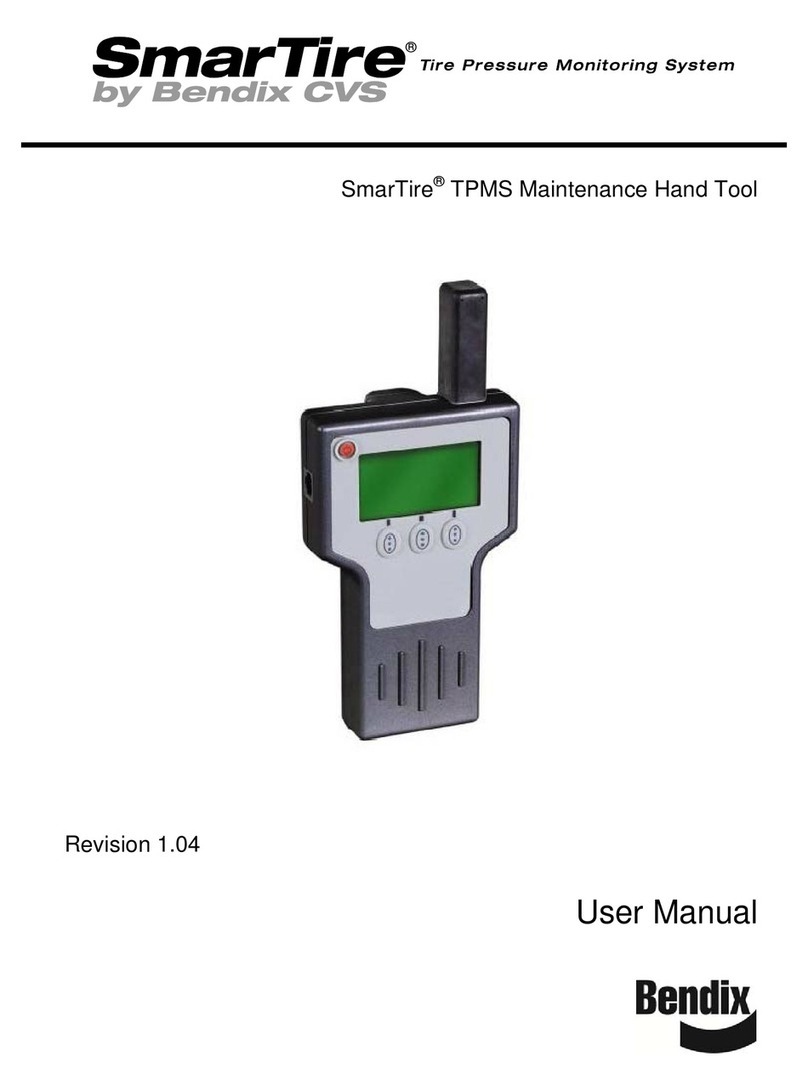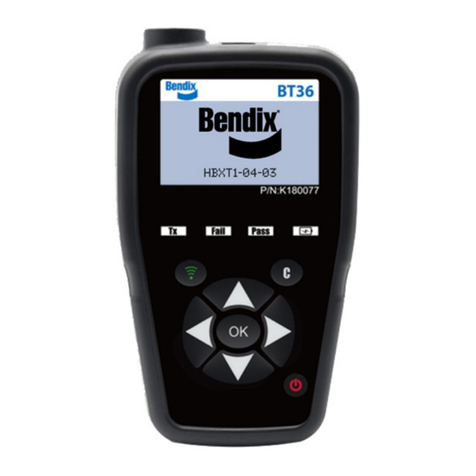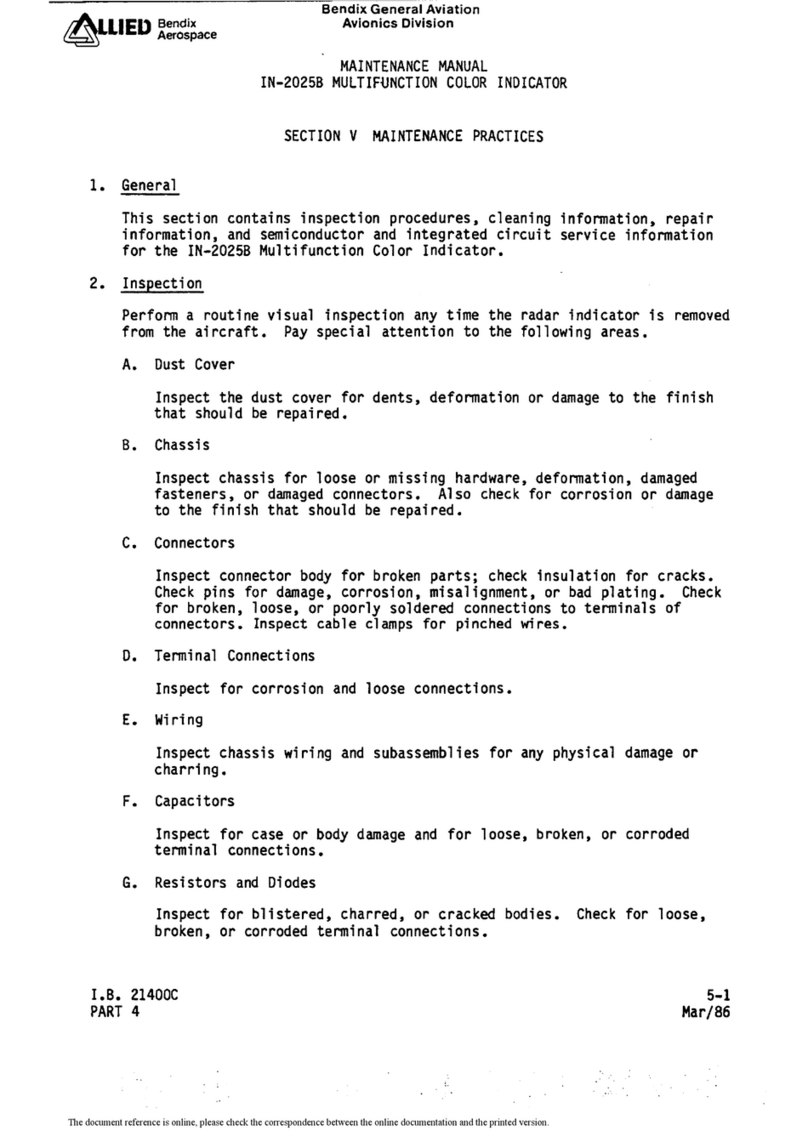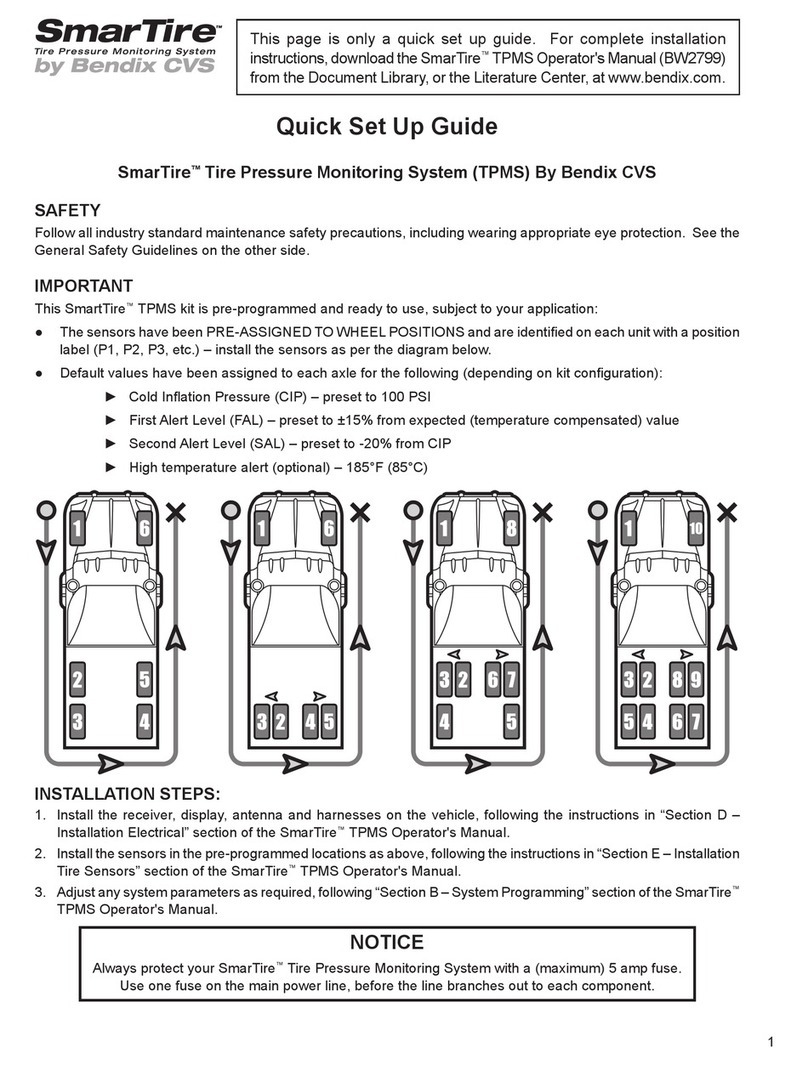
2
INSTRUCTION CONTENTS
Parts Kit Contents . . . . . . . . . . . . . . . . . 1
Preparation. . . . . . . . . . . . . . . . . . . . . 2
Required Tools . . . . . . . . . . . . . . . . . . . 2
Description . . . . . . . . . . . . . . . . . . . . . 2
Radar Installation. . . . . . . . . . . . . . . . . . 3
Operator Display Unit Installation . . . . . . . . . 4
Harness Installation . . . . . . . . . . . . . . . . 4
Power-Up System Test . . . . . . . . . . . . . . . 6
Testing the Installation . . . . . . . . . . . . . . . 7
Operator Display Unit Indicators . . . . . . . . . . 7
Appendix A Recommended Wire Splices . . . . . 8
Any changes or modications made by the user to this
equipment that are not expressly approved by Bendix
Commercial Vehicle Systems LLC could void the user’s
authority to operate the equipment.
Every effort has been made to ensure the accuracy of
all information. However, Bendix Commercial Vehicle
Systems LLC makes no expressed or implied warranty or
representation based on the enclosed information. Errors
or omissions should be reported to:
Bendix Commercial Vehicle Systems LLC
901 Cleveland Street
Elyria, OH 44035
or 1-800-AIR-BRAKE (1-800-247-2725).
GENERAL
This kit contains the components necessary to install the
Bendix™BlindSpotter®system. Verify the kit contents
before starting the installation. See Figure 1.
PREPARATION
Park the vehicle on level ground. Switch off the ignition and
disconnect the battery. See the General Safety Guidelines.
Read and understand this document before beginning work.
REQUIRED TOOLS
Download the Service Data Sheet SD-61-4933 from
bendix.com. General tools for the mechanical and electrical
installation of the radar sensor with bracket and the operator
display unit are required.
DESCRIPTION
The Bendix BlindSpotter side object detection system
is intended for commercial use and is designed to help
professional drivers with vehicle blind-spots. The system
can be installed on one or both sides of the vehicle.
Each system can have up to four radar sensors located on
the same side of the vehicle. The Operator Display Unit
(ODU) is attached to the windshield pillar on the same side
as the radar sensor. The ODU warns the driver when one of
the radar sensors it is connected to detects large metallic
objects within the range of the radar sensor.
GENERAL SAFETY GUIDELINES
WARNING! PLEASE READ AND
FOLLOW THESE INSTRUCTIONS
TO AVOID PERSONAL INJURY OR DEATH:
When working on or around a vehicle, the following
guidelines should be observed AT ALL TIMES:
▲Park the vehicle on a level surface, apply the parking
brakes and always block the wheels. Always wear personal
protection equipment.
▲Stop the engine and remove the ignition key when working
under or around the vehicle. When working in the engine
compartment, the engine should be shut off and the ignition
key should be removed. Where circumstances require that
the engine be in operation, EXTREME CAUTION should be
used to prevent personal injury resulting from contact with
moving, rotating, leaking, heated or electrically-charged
components.
▲Do not attempt to install, remove, disassemble or
assemble a component until you have read, and thoroughly
understand, the recommended procedures. Use only the
proper tools and observe all precautions pertaining to use
of those tools.
▲If the work is being performed on the vehicle’s air brake
system, or any auxiliary pressurized air systems, make
certain to drain the air pressure from all reservoirs before
beginning ANY work on the vehicle. If the vehicle is
equipped with a Bendix®AD-IS®air dryer system, a Bendix®
DRM™dryer reservoir module, or a Bendix® AD-9si®air
dryer, be sure to drain the purge reservoir.
▲
Following the vehicle manufacturer’s recommended
procedures, deactivate the electrical system in a manner
that safely removes all electrical power from the vehicle
.
▲Never exceed manufacturer’s recommended pressures.
▲Never connect or disconnect a hose or line containing
pressure; it may whip and/or cause hazardous airborne
dust and dirt particles. Wear eye protection. Slowly open
connections with care, and verify that no pressure is
present. Never remove a component or plug unless you are
certain all system pressure has been depleted.
▲Use only genuine Bendix®brand replacement parts,
components and kits. Replacement hardware, tubing, hose,
fi ttings, wiring, etc. must be of equivalent size, type and
strength as original equipment and be designed specifi cally
for such applications and systems.
▲Components with stripped threads or damaged parts should
be replaced rather than repaired. Do not attempt repairs
requiring machining or welding unless specifi cally stated
and approved by the vehicle and component manufacturer.
▲Prior to returning the vehicle to service, make certain all
components and systems are restored to their proper
operating condition.
▲For vehicles with Automatic Traction Control (ATC), the ATC
function must be disabled (ATC indicator lamp should be
ON) prior to performing any vehicle maintenance where
one or more wheels on a drive axle are lifted off the ground
and moving.
▲The power MUST be temporarily disconnected from the
radar sensor whenever any tests USING A DYNAMOMETER
are conducted on a vehicle equipped with a Bendix®
Wingman®system.
▲You should consult the vehicle manufacturer's operating
and service manuals, and any related literature, in
conjunction with the Guidelines above.






























